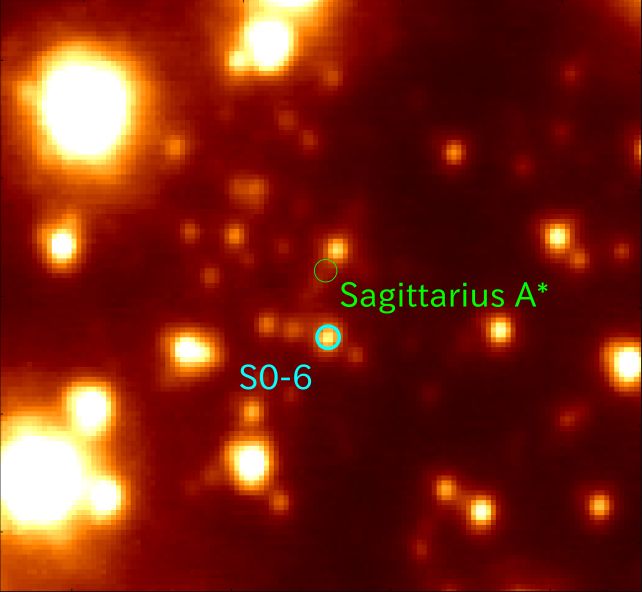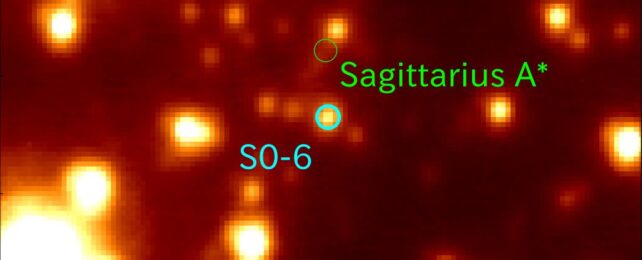At the center of the Milky Way orbits a swarm of stars attendant on a supermassive black hole.
These are the S-stars, and they're the object of astronomical fascination and wonder. Not least of the puzzles surrounding them is their origin.
The vicinity of a supermassive black hole is thought to be way too extreme and messy to allow for star formation, so astronomers believe that any stars hanging about there must have come from somewhere else.
Well, now a team led by astrophysicist Shogo Nishiyama of Miyagi University of Education has determined the origins of one of those stars, named S0-6 – and found that it's decidedly not from around here.
In fact, S0-6 appears to be from outside the Milky Way entirely, making it the first star in the galactic center found to have an extragalactic origin story.
The S-stars are good fun, actually. They have long, looping, elliptical orbits around supermassive black hole Sagittarius A* that reach mind-boggling speeds; the fastest star found in the Milky Way to date is an S-star that hits velocities up to 24,000 kilometers (15,000 miles) per second as it swoops around the black hole.
An S-star was also part of a long, multi-decade campaign of observation and analysis to demonstrate general relativity on one of the most extreme scales yet. So they're pretty interesting for learning more about how physics works.

But Nishiyama and his colleagues wanted to know where the stars actually came from in the first place. Using the Subaru Telescope, an optical-infrared observatory in Hawaii, they made a careful study of S0-6 over the course of 8 years.
First, they measured the velocity and trajectory of the star, finding acceleration that confirms its orbit around Sagittarius A*. S0-6 is located just 0.04 light-years from the black hole.
Then, they made a careful analysis of the light emitted by the star, looking for brighter and darker lines on its spectrum. These lines are created by elements that absorb and emit specific wavelengths of light, and can thus reveal the chemical composition of the star itself.
Because older stars have a lower quantity of heavy elements than younger stars, this information can help astronomers work out how old a star is. But the composition of a star can also help reveal its origin, since stars that are born in the same place at the same time usually have similar chemical profiles.
The spectrum of S0-6, the researchers found, is pretty low in heavy elements, giving an age estimate of around 10 billion years old.
But the quantities and ratios of those elements are most similar to stars outside the Milky Way – namely, those in dwarf galaxies orbiting the Milky Way such as the Sagittarius Dwarf Spheroidal Galaxy and the Small Magellanic Cloud.
These galaxies are currently in the process of being very slowly devoured by the Milky Way, so it's not unexpected that some of their stars might end up here. And we know that the Milky Way has eaten quite a few other galaxies over its 13.6 billion-year lifespan.
A number of relics of these subsumed galaxies exist within the Milky Way. S0-6 represents the first observational evidence that their remains could have made their way towards the galactic center.
That remains to be confirmed, though at the very least, we know that the chemical evolution of S0-6 was quite different from that of other stars in the galactic center. Of course, as ever and always, more research will need to be done.
"Did S0-6 really originate outside the Milky Way galaxy?" Nishiyama says. "Does it have any companions, or did it travel alone? With further investigation, we hope to unravel the mysteries of stars near the supermassive black hole."
The research has been published in Proceedings of the Japan Academy, Series B.
